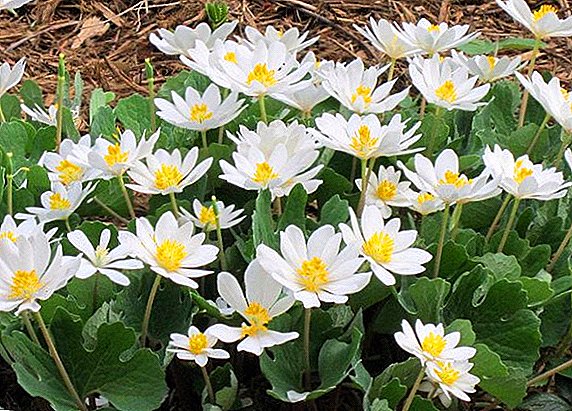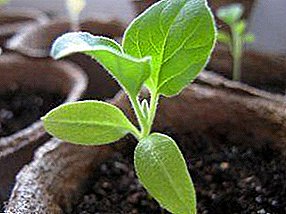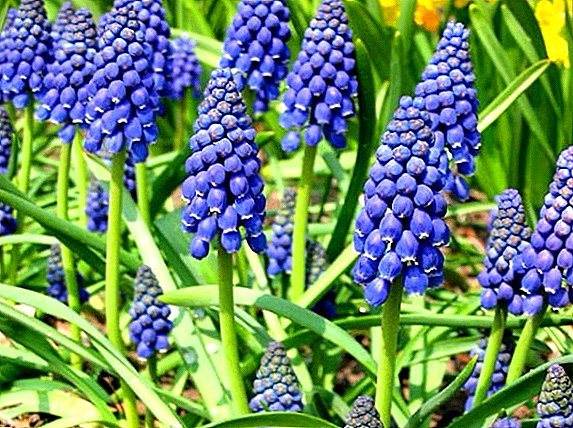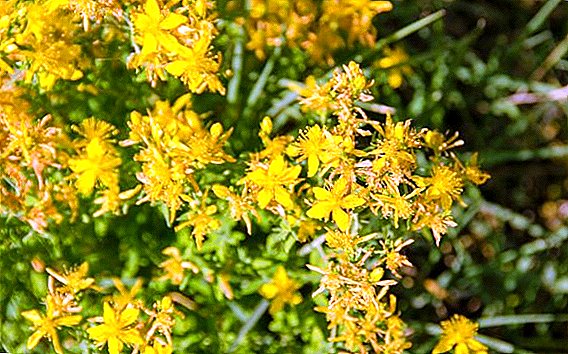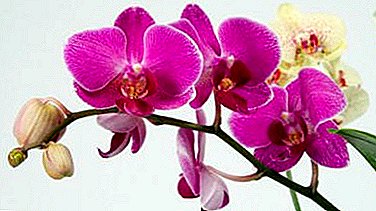
Orchid is one of the most beautiful flowers in the world. It is not surprising that many dream of such an acquisition. And having bought it in a store or having received it as a gift, they ask a number of questions: “Should the plant be repotted?”, “How to take care of it correctly?”, “What conditions are needed for a miracle flower?” "What mistakes make growers?" These and other questions will try to answer this article.
Flower growing conditions in the store
In greenhouses or specialized flower shops orchids are provided with proper care.: it maintains a comfortable level of humidity for them, air temperature, systematic pest and disease control is carried out. But acquiring a flower in a small shop, you can face a number of problems, since the conditions of plant maintenance are far from ideal.
Important! Therefore, special attention should be paid to the appearance of the orchid. It should look like a healthy plant with fresh, resilient leaves of green or reddish-green color, healthy roots of green or silver-gray color.
A photo
Below you will see a photo of a flower:




How long does the adaptation to new conditions last?
The orchid is a capricious flower. After the purchase, you need to be prepared for the fact that her behavior at home during the acclimatization period is unpredictable: she can throw off the flowers that are so pleasing to the eye in the store, can start to dry out, etc. You should not be afraid: this is normal behavior during the period of plant adaptation to new conditions. She takes time to "come to his senses."
Reference. Lovers and florists say that this period of orchids lasts for a month. But all this is individual and depends on whether comfortable conditions are provided for the flower.
Quarantine period
The first time, when the flower was brought from the store, it should be kept away from other plants for 2 weeks. During this period, the orchid does not need to be watered, fed, it does not need direct sunlight. The flower just needs rest in order for it to come to its senses from the resulting stress.
During the period of quarantine, you should carefully observe the plant and its leaves for the timely detection of diseases or pests. By the end of the quarantine, the orchid must be taught to normal habitat conditions: for a short time, put it in a sunny place, if necessary, water it a little.
Step-by-step instructions on how to care for an acquired potted plant
What to do next with the flower after its purchase in the store? There are several steps, following which you will ensure a long life for a beautiful flower and a lot of positive from contemplating the miracle of nature.
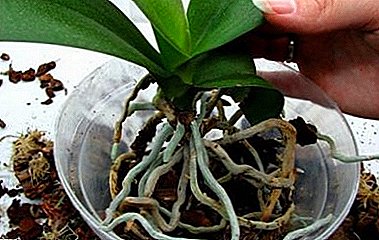 Replace or not?
Replace or not? Many people think that immediately after the store, the orchid should be transplanted. This is not true. The substrate in which the beauty grows, is designed for 2 years. Transplanting is necessary only if the flower falls out of the pot, planted in the moss or bought at bargain prices.
Also, it is necessary to replant when a large number of excessively creeping roots are visible from the container - a sign that the container has become small.
- Where better to put?
Orchid loves a lot of diffused light. In the summer it is advisable to priten it (film on the window, rearrangement on furniture or a special stand at a distance of 1 m from the window). It is believed that a window facing west or east would be ideal for a flower. The optimal length of daylight hours for an orchid is 12 hours, it will be advisable to highlight the plant in the fall and winter with fluorescent lamps.
- Conditions of the orchid.
- Orchid does not like dry air. It should be systematically sprayed with slightly warm water, especially in the heat or if the flower is located near the central heating battery. Some florists believe that the flower periodically needs a warm shower, which will remind you of warm tropical rainfall. But this should not be done during active flowering.
- Air circulation is important for the plant: a stuffy room that is not systematically ventilated is destructive for it. However, there is no need to make a draft: capricious may discard flowers. Experienced florists occasionally turn on a low-speed fan in the room, not aiming at the flowers.
- If we talk about temperature, then orchids prefer heat. The optimal indicators are + 20С, + 25С. When the thermometer drops below + 18C, there is a risk of dropping flowers or killing the plant.
- How often and properly water?
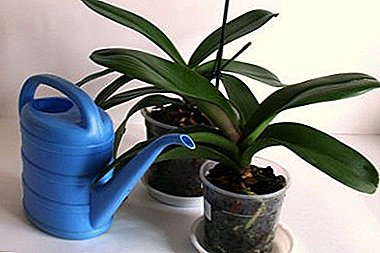 Orchids grow in natural conditions on trees, far from moisture. Therefore, it is preferable for her to dry than waterlogging. It is necessary to water the plant intensively during the ejection of flower stalks.
Orchids grow in natural conditions on trees, far from moisture. Therefore, it is preferable for her to dry than waterlogging. It is necessary to water the plant intensively during the ejection of flower stalks.It is necessary to water with settled or thawed snow; a simple boiled one will do. The frequency of watering depends on the season: in the summer, 2-3 times, and in the winter, 1-2 times a week. The irrigation technology is simple: immerse the flowerpot in a container of warm water for 10 minutes or pour water over the shower from above. After giving time to drain water on the grate, and after placing the plant in a decorative pot.
- Top dressing orchids.
Important! Immediately after buying an orchid can not be fed! It is necessary to give time to the flower to acclimatize in the new conditions, otherwise it will drop all its flowers.
As with water, it is better to under-feed an orchid than to overfeed. Specialists believe that frequent fertilization helps to reduce the immunity of the plant, and it becomes susceptible to various kinds of diseases to a greater extent. Naturally, for fertilizing, you should use special fertilizers sold in flower shops.
As many florists recommend, you should start feeding with half the dose indicated on the fertilizer label. If fertilizing is made with a universal fertilizer for decorative-flowering flowers, the single dose should be 3-4 times lower than that indicated by the manufacturer.
Orchid should be fertilized during the growth period, when it throws out a new leaf from the growth point. If the growth of the leaf has stopped, then the feeding should be stopped or reduced to 1 time per month.
Active plant growth ceases most often in the autumn-winter period and in summer at high air temperatures. In the spring, during the period of active growth, the flower should be fertilized with every second watering.
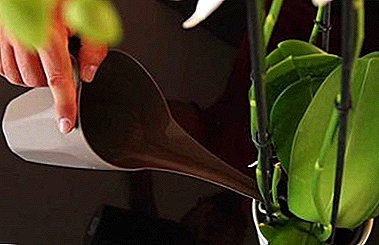 Before applying the fertilizer, the orchid needs to be watered with clean water in the manner accustomed to the plant. This is done to avoid burning the root system of the flower.
Before applying the fertilizer, the orchid needs to be watered with clean water in the manner accustomed to the plant. This is done to avoid burning the root system of the flower.It is not necessary to feed the plant during flowering: if the orchid has released flower spike, fertilizing should be stopped. Otherwise, a full color reset is possible. Does not need fertilizers and a sick plant, there is a risk of his death.
What problems may arise?
No one is immune from the fact that after they bought an orchid, a number of problems can arise: the leaves will start to turn yellow, the roots will rot, pests will be found, etc. What to do with it in such cases?
- The process of yellowing leaves is a normal phenomenon, if the old lower leaves turn yellow, because The plant is constantly updated. When young leaves turn yellow, you should think about the proper implementation of watering. Such a phenomenon, like rotting roots, often accompanies the overwetting. Still leaves may turn yellow from hypothermia or from direct sunlight on them in the summer for a long time.
- As mentioned above, rotten roots are the result of excessive watering. A mandatory step in this case is to transplant the plant to a new substrate, removing rotted parts of the root system.
- If it was found that the plant suffers from pests, then an urgent need to take up treatment: spray, water the plant with special liquids, which should be purchased in a specialty store, after consulting the seller. Requires daily washing and wiping the leaves of the plant.
What to do with just bought a flowering plant in the store?
No peculiarities for the care of a blooming orchid after the acquisition in the store does not exist - all the basic instructions on flower care rules listed above remain valid. It should be remembered that the plant from the change of place is experiencing stress, it does not need to replant, water, stand in the sun, feed. The plant needs peace!
Errors
 Orchid is firmly established the reputation of the flower, which is very difficult to care for. This is not true. Orchid loves attention (but not excessive), care and observance of the above basic rules. Many newcomers, having seen the yellowed leaf, begin to re-read all the literature on diseases, and, having found similar symptoms, they begin to heal the plant vigorously, and sometimes they just throw it away.
Orchid is firmly established the reputation of the flower, which is very difficult to care for. This is not true. Orchid loves attention (but not excessive), care and observance of the above basic rules. Many newcomers, having seen the yellowed leaf, begin to re-read all the literature on diseases, and, having found similar symptoms, they begin to heal the plant vigorously, and sometimes they just throw it away.
And behind the yellowed leaf hid banal non-compliance with the requirements for the maintenance of orchids. Some perceive the orchid more as an element of the interior of the room, not thinking about the fact that they face a living organism with their needs.
Consequences of improper care
Hyper-drug or complete lack of attention to the flower is ruining it. The main indicator that makes you think about whether everything is done correctly is the unhealthy appearance of the plant: yellowed or wilted leaves, change of color of the roots (from green or silver to red, black or brown), flower discharge, etc.
It is necessary to systematically monitor the plant, and if problems are found, it is necessary to understand the reasons that prompted them. In order for the miracle flower to enjoy lush flowering for many years, in order to avoid the death of the plant, it is necessary to study in detail all the available information about the variety of orchids purchased; An experienced sales consultant or information on the Internet, better taken from several sources, can help. The main key to success is patience, care and love.


 Replace or not?
Replace or not?  Orchids grow in natural conditions on trees, far from moisture. Therefore, it is preferable for her to dry than waterlogging. It is necessary to water the plant intensively during the ejection of flower stalks.
Orchids grow in natural conditions on trees, far from moisture. Therefore, it is preferable for her to dry than waterlogging. It is necessary to water the plant intensively during the ejection of flower stalks. Before applying the fertilizer, the orchid needs to be watered with clean water in the manner accustomed to the plant. This is done to avoid burning the root system of the flower.
Before applying the fertilizer, the orchid needs to be watered with clean water in the manner accustomed to the plant. This is done to avoid burning the root system of the flower.
